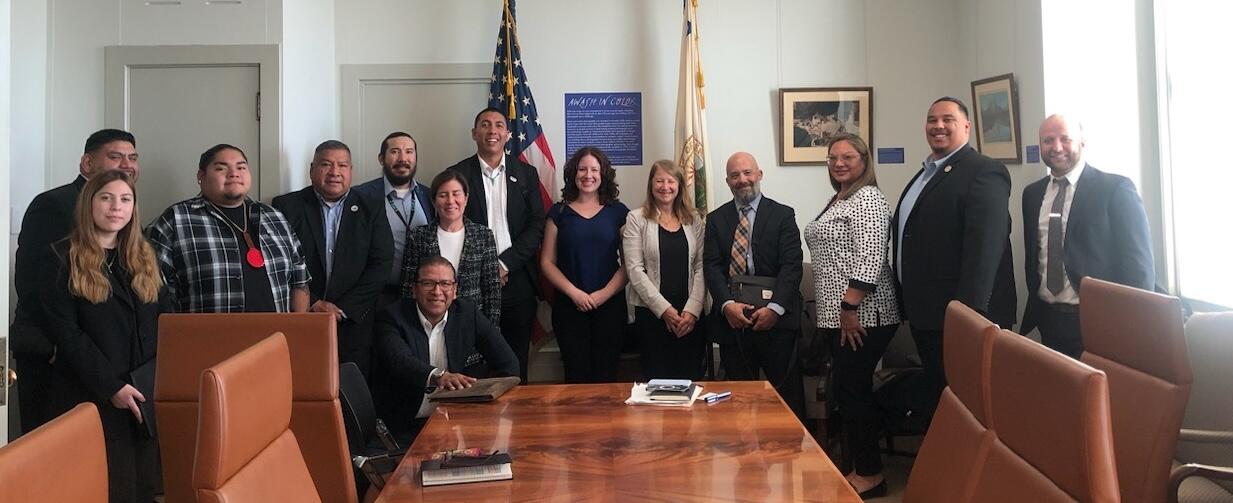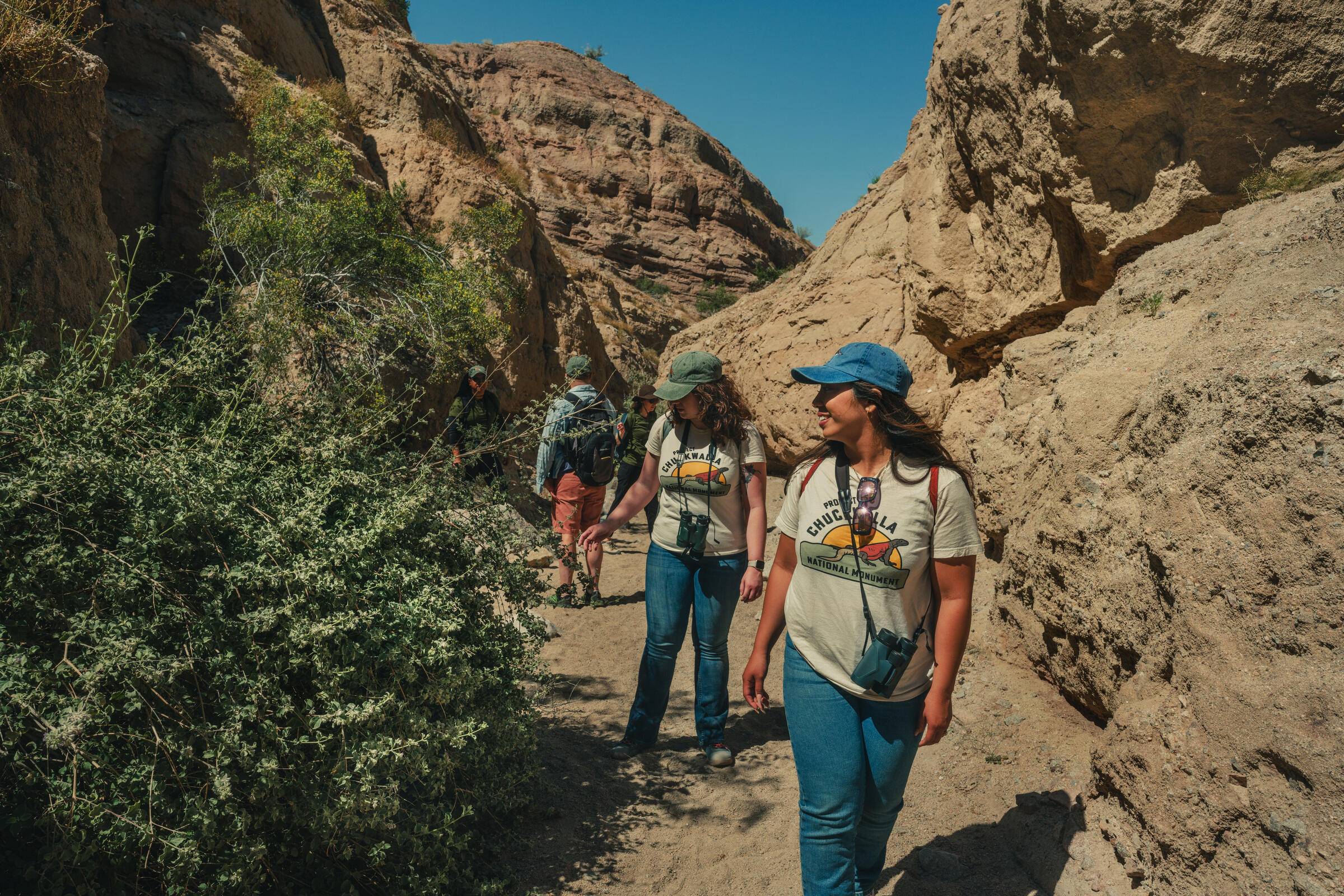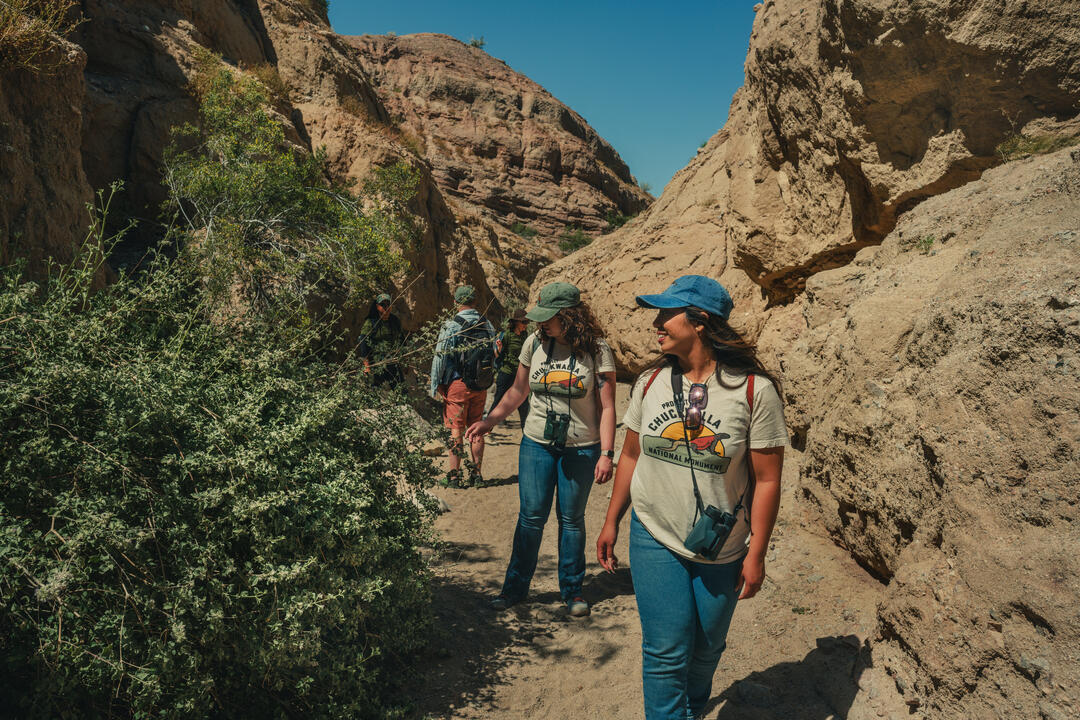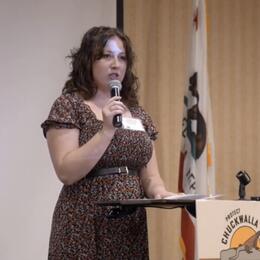Bright-eyed, bushy-tailed, and scared. That’s how I felt after graduating with my B.A. in History last summer. People were all too quick to tell me how my degree was useless unless I wanted to be a teacher, which was about the only thing I knew I did not want to do. So, after graduation, it was time to face the dreaded task of finding the so-called nonexistent job. While scrolling through job boards, I received an email from my university’s career center about an exciting new internship.
Audubon California was looking for college students in the Eastern Coachella Valley interested in learning about the National Monument process for a paid position as a Chuckwalla Youth Ambassador. Despite feeling like I was nearing the end of my youth (as I approached my mid-20s), I was intrigued by the opportunity to engage directly with folks in my community to preserve access to nature. The outreach focus of the learning opportunity inspired me to apply and I eagerly submitted my application in early August 2023.
By September, I was giving a public statement calling on President Biden to use his authority under the Antiquities Act to designate the Chuckwalla National Monument. A proposed 627,000-acre area in the California Desert, stretching from the Coachella Valley region east to the Colorado River, adjacent to Joshua Tree National Park and north of the Chocolate Mountains, this monument would protect one of the largest intact desert ecosystems left in the country.
I was nervous to speak; it was my first time meeting anyone from the Protect California Deserts Coalition in person. There was a sea of people, cameras, and lights, and I felt intimidated by it all. Frank Ruiz, former Audubon California Desert and Salton Sea Program Director, pulled me into a back room for a quick planning session and pep talk before we took turns speaking at the campaign launch. Congressman Dr. Raul Ruiz, the congressional champion of our monument proposal, offered kind words of encouragement that gave me the confidence I needed to take the stage for my speech in front of the crowds at Spotlight 29 Casino in Coachella.
Over the next several months, I had the chance to see and feel for myself a unique connection to this land. Through my outreach efforts on the campaign, I’ve learned just how vital the Chuckwalla National Monument is to our region. Right where the Mojave, Sonoran, and Colorado Deserts meet, this area holds a surprising amount of biodiversity. It's home to several rare and endangered species, as well as bighorn sheep, desert tortoises, desert pupfish, and of course, the Chuckwalla lizard. Working at Audubon California, I also learned all about the cool birds that rely on the area, like Golden Eagles, Verdins, Greater Roadrunners, and Phainopepla (sometimes known as the Goth Cardinal)!
Since that first experience as a Chuckwalla Youth Ambassador, I have had a plethora of what I like to call “monumental moments.” In October 2023, I went on a D.C. fly-in trip to discuss my perspective on the Chuckwalla National Monument as a young person born and raised in the Coachella Valley. We had meetings with a variety of federal agencies, including the Department of the Interior, President Biden and Vice President Harris’ staff, and our congressional representatives. This was an amazing opportunity, not only because I had never been to D.C. or spoken with members of the federal government, besides Congressman Ruiz, but also because of the connections I made during the trip. I met so many incredible people, including Oscar Ortiz, former Mayor of Indio (the city I live in), and many representatives from tribes to whom the Coachella Valley has been home for time immemorial. It was invaluable to hear everyone’s unique connection to the land within Chuckwalla National Monument and their perspectives on why it is so special.

In November, I participated in flyovers of the Salton Sea and the California desert included in the Chuckwalla National Monument proposal. I took the Salton Sea flight first. The Sea was vast and gray on the overcast day, while the green agricultural fields and emerging vegetation that border the Sea stood out like a checkerboard against the colorless playa. The flight was smooth compared to the flyover of Chuckwalla I went on the following morning. The mountains within the proposed monument are incredible feats of geology—some jutting out of the ground like great diagonal slabs of granite, others transformed into verdant rolling hills by the winter rains. Not only did the rains offer a surprising glimpse of green over the vast desert, but I also learned that there were mini desert forests hidden within these canyons, called microphyll woodlands, which provide important shelter and food for migrating birds.
In January, I joined the Council of Mexican Federations in North America (COFEM) for a camping trip to Corn Springs Campground. The experience took me back to my childhood, when my family would caravan to Patrick’s Point. Those trips were filled with fun memories, though I also remember the less enjoyable parts—like shivering through cold showers and spending more time looking after my younger siblings than exploring my surroundings. Being reintroduced to camping as an adult was eye-opening, as it showed me that the logistics of camping, though intimidating at first, are entirely manageable with proper planning. It was incredibly helpful to learn how to pitch a tent and cook while camping, skills I never had to worry about as a kid.
During that trip, we went on multiple hikes and explored the unique features of the proposed Chuckwalla National Monument, such as petroglyphs—ancient rock carvings left by Indigenous peoples. A reminder that this land has been sacred to the ancestors of the local Cahuilla, Chemehuevi, Mohave, Quechan, and Serrano peoples for time immemorial. Learning about this deep historical connection reinforced how important it is to protect this land, not only for its ecological value but for its cultural significance as well. This land is worth protecting, and working on the campaign has only deepened my appreciation for the California Desert’s incredible richness.
I learned so much through the internship, not only about the desert that surrounds my home here in the Coachella Valley, but also about the process to establish a national monument and the various stakeholders that need to be involved. Over the past year, our coalition—co-led by more than a dozen Tribes, organizations, and community partners—has worked tirelessly to protect our desert landscapes. We’ve knocked on doors, attended public meetings, tabled at community events, and introduced newcomers to our region’s breathtaking hiking trails, helping them connect with nature in their own communities. We’ve also supported legislation to protect this unique region of palm oases, mountain ranges, and lush desert woodlands.
Now, as Campaign Organizer at Audubon California, I am even more committed to making the Chuckwalla National Monument a reality. Join me! Support the campaign—for our desert communities and birds like the Phainopepla—by signing our action alert and registering for our newsletter. Together, we can continue urging President Biden to protect this place. With his support, we can make a lasting difference in preserving these vital lands.






